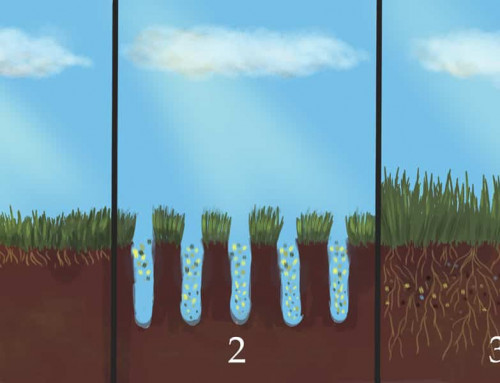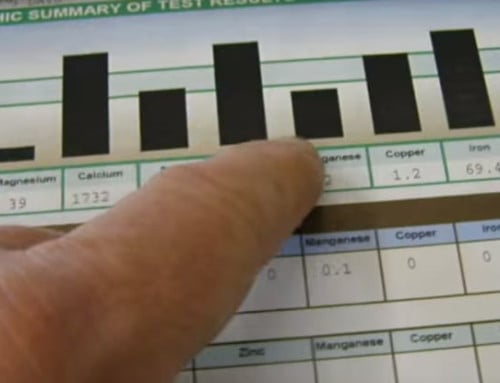Renovating Your Lawn’s Existing Soil
Many of my clients ask me how to improve their poor, tired soil. I suggest aerating your lawn and adding a fine compost product or fertimulch. After lawn aeration, the compost material will be raked into the aeration holes. When the compost breaks down, it will help to actually change the entire soil profile. Compost encourages healthy root systems in lawns and makes any soil easier to work with. This will promote the healthier lawn you are looking for. The best time of the year for this is October.
What To Look for In a Lawn Compost
The perfect compost for lawn applications should be fine in size and should not be moldy or rotten. There should be no large pieces of wood, as these will take a long time to break down and can cause mushrooms. Compost is ready to use when it is dark brown, crumbly, and has an earthy odor. Compost is available by the bag or by the truckload. Be sure to specify to the company that it will be put on your lawn.
Compost Benefits
- Compost has similar benefits to a lawn as a multi-vitamin has to a person’s health. It provides Nitrogen, Phosphorus, and Potassium, all of which are vitally important to soil health.
- Compost stimulates root growth and helps to balance the pH levels of most soils. It also attracts beneficial insects and worms for a healthier ecosystem.
- Clay soils are too heavy and compact for healthy root structure. The soil particles are small and tightly bound together. When clay is wet, it gets sticky and compacted. When fine compost is mixed with clay soils, it binds to the clay and forms larger particles that allow more airflow. This alters the soil structure and prevents erosion of topsoil.
- Compost reduces surface hardening and greatly improves drainage.
Old Vs. New Lawns?
Older lawns have experienced years of foot traffic, lawn mowing and other events that cause compaction issues. The resulting issues are similar to those seen with clay soils. Houses built in the last 20 years have even more soil compaction from bulldozers, backhoes and lifts used in the construction process. In new construction, the lawn is graded (all soil scraped and taken away) then covered again with 1 or 2 inches of soil.
Best Methods of Improvement
If you live on a property with compacted soil, the best course of action is bi-annual lawn aeration, followed by the addition finely ground of compost into the aeration holes. After aeration, about 1/4 -1/2 inches of fine compost will need to be spread over your lawn with a flexible garden rake to obtain best results. It is important that the layer of compost is thin and even. If it is applied too thick, it will smother your grass. A thin layer will break down quickly and release its nutrients into your lawn. If there has been no rain the two days after you aerate and spread the compost mix, give it a good watering to ensure the compost penetrates the soil under the grass. Your lawn may look untidy for about 3 weeks after aeration and composting. This is completely normal. Over the following weeks and months, you will see a superior quality of grass. Below the surface, the soil structure will be greatly improved for many months to come.
Recommended Local Compost Providers
If you are in the Seattle area, you can order fine compost through Walt’s Organics.
If you live in the Mill Creek area I recommend Bailey Compost.
Interesting Facts
- Fifty-two percent of metro single-family households engage in home composting or some other form of onsite organics management.
- Use of compost helps you save money, because it reduces the plants’ requirement for expensive chemical pesticides and fertilizers.
- An average household produces 600 pounds of compostable yard waste yearly.
- Compostable material makes up 20 percent of a community’s residential waste.





